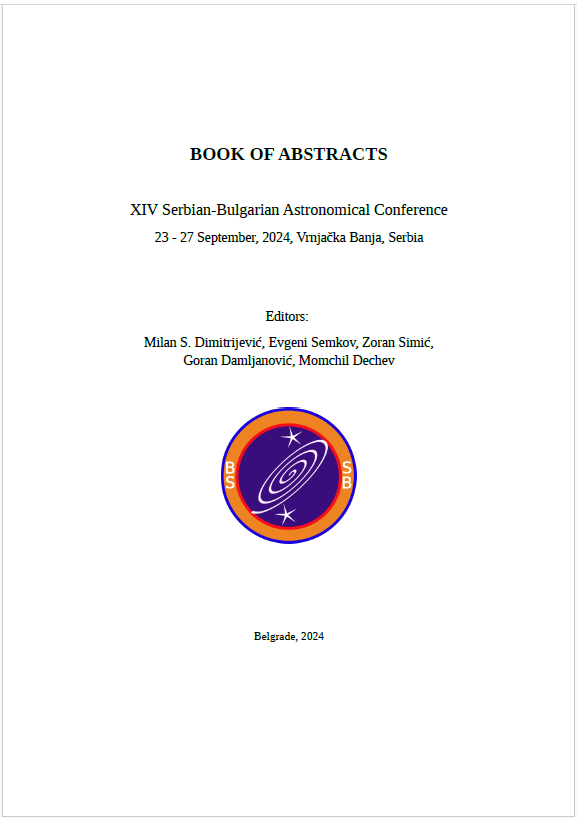SEGMENTATION AND TRACKING OF SOLAR ERUPTIVE PHENOMENA: DATA DRIVEN AND ALGORITHMIC APPROACHES
Oleg Stepanyuk and Kamen Kozarev
Publication
BOOK OF ABSTRACTS: XIV Serbian-Bulgarian Astronomical Conference, Page 31, https://doi.org/10.69646/14sbac28a
BOOK OF ABSTRACTS: XIV Serbian-Bulgarian Astronomical Conference, 23 - 27 September, 2024, Vrnjačka Banja, Serbia. Editors: Milan S. Dimitrijević, Evgeni Semkov, Zoran Simić, Goran Damljanović, Momchil Dechev
Published: 17. 11. 2024.
Abstract
Solar eruptive events is a phenomena which most often include coronal mass ejections (CME), flares, compressive/shock waves, and filament eruptions. CMEs are large eruptions of magnetized plasma from the Sun’s outer atmosphere or corona, that propagate outward into the interplanetary space. Solar Energetic Particles (SEP) are produced through particle acceleration in flares or CME-driven shocks. Exact mechanisms behind SEP production are yet to be understood, but it is thought that most of their acceleration occurs in shocks starting in the low corona. Over the last several decades a large amount of remote solar eruption observations have become available from ground-based and space-borne instruments. This has required development of software approaches for automated characterization of eruptive features. Most solar feature detection and tracking algorithms currently in use have restricted applicability and complicated processing chains, while the complexities in engineering machine learning (ML) training sets limit the use of data-driven approaches for tracking or solar eruptive related phenomena. Recently, we introduced a hybrid algorithmic—data driven approach for characterization and tracking of solar eruptive features with the improved wavelet-based, multi- instrument Wavetrack package (Stepanyuk et.al, J. Space Weather Space Clim. (2024)), which was used to produce training datasets for data driven image segmentation with convolutional neural networks (CNN). Its perfomance was shown on a limited set of SDO AIA 193A instrument data perfoming segmentation of EUV and shock waves. Here we extend thisapproach and present an ensemble of more general CNN models for data-driven segmentation of various eruptive phenomena for the set of ground-based and remote instruments data. We discuss our approach to engineering training sets and data augmentation, CNN topology, training techniques and applications of acquired ground-truth EUV masks for radio observations labeling.




